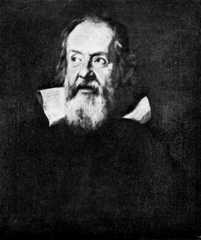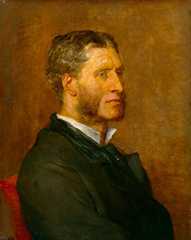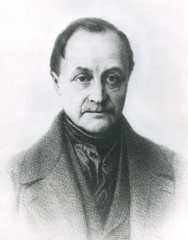social science
Our editors will review what you’ve submitted and determine whether to revise the article.
What is a social science?
A social science is any branch of academic study or science that deals with human behaviour in its social and cultural aspects. Usually included within the social sciences are cultural (or social) anthropology, sociology, psychology, political science, and economics.
What is the relationship between the terms behavioral science and social science?
Beginning in the 1950s, the termbehavioral sciences was often applied to disciplines categorized as social sciences. Some favored this term because it brought these disciplines closer to some of the sciences, such as physical anthropology, which also deal with human behavior.
Who named the social science discipline of sociology?
Auguste Comte gave the social science of sociology its name and established the new discipline in a systematic fashion.
What is cultural anthropology’s relationship to the social sciences?
Cultural anthropology is a branch of the social sciences that deals with the study of culture in all of its aspects and that uses the methods, concepts, and data of archaeology, ethnography and ethnology, folklore, and linguistics.
What was Adolphe Quetelet’s contribution to the social sciences?
Adolphe Quetelet was a key figure in the social statistics branch of the social sciences. He was the first person to call attention, in a systematic manner, to the kinds of structured behavior that could be observed and identified only through statistical means.
social science, any branch of academic study orscience that deals withhuman behaviour in its social and cultural aspects. Usually included within the social sciences arecultural (or social)anthropology,sociology,psychology,political science, andeconomics. Thediscipline ofhistoriography is regarded by many as a social science, and certain areas of historical study are almost indistinguishable from work done in the social sciences. Most historians, however, considerhistory as one of thehumanities. In theUnited States, focused programs, such as African-American Studies, Latinx Studies, Women, Gender, and Sexuality Studies, are, as arule, also included among the social sciences, as are often Latin American Studies and Middle Eastern Studies, while, for instance, French, German, or Italian Studies are commonly associated with humanities. In the past, Sovietology was always considered a social science discipline, in contrast to Russian Studies.
Beginning in the 1950s, the termbehavioral sciences was often applied to thedisciplines designated as the social sciences. Those who favoured this term did so in part because these disciplines were thus brought closer to some of the sciences, such asphysical anthropology andphysiological psychology, which also deal with human behaviour.
Strictly speaking, the social sciences, as distinct and recognized academic disciplines, emerged only on the cusp of the 20th century. But one must go back farther in time for the origins of some of their fundamental ideas and objectives. In the largest sense, the origins go all the way back to theancient Greeks and their rationalist inquiries intohuman nature, thestate, andmorality. Theheritage of both Greece and Rome is a powerful one in the history of social thought, as it is in other areas of Western society. Very probably, apart from the initial Greek determination to study all things in the spirit of dispassionate and rational inquiry, there would be no social sciences today. True, there have been long periods of time, as during the WesternMiddle Ages, when the Greek rationalist temper was lacking. But the recovery of this temper, through texts of the great classical philosophers, is the very essence of theRenaissance and theEnlightenment in modern European history. With the Enlightenment, in the 17th and 18th centuries, one may begin.
Heritage of the Middle Ages and the Renaissance
Effects of theology
The same impulses that led people in that age to exploreEarth, the stellar regions, and the nature ofmatter led them also to explore the institutions around them: state, economy,religion,morality, and, above all, human nature itself. It was the fragmentation ofmedieval philosophy and theory, and, with this, the shattering of themedieval worldview that had lain deep in thought until about the 16th century, that was the immediate basis of the rise of the several strands of specialized social thought that were in time to provide the inspiration for the social sciences.
Medievaltheology, especially as it appears inSt. Thomas Aquinas’sSumma theologiae (1265/66–1273), contained and fashioned syntheses from ideas about humanity and society—ideas indeed that may be seen to be political, social, economic, anthropological, and geographical in their substance. But it is partly this close relation between medievaltheology and ideas of the social sciences that accounts for the different trajectories of the social sciences, on the one hand, and the trajectories of the physical and life sciences, on the other. From the time of the English philosopherRoger Bacon in the 13th century, there were at least some rudiments ofphysical science that were largely independent of medieval theology and philosophy. Historians of physical science have no difficulty in tracing the continuation of this experimental tradition, primitive and irregular though it was by later standards, throughout theMiddle Ages. Side by side with the kinds of experiment made notable by Bacon were impressive changes intechnology through the medieval period and then, in strikingdegree, in theRenaissance. Efforts to improve agricultural productivity; the rising utilization ofgunpowder, with consequent development of guns and the problems that they presented in ballistics; growingtrade, leading to increased use of ships and improvements in the arts ofnavigation, including use oftelescopes; and the whole range of such mechanical arts in the Middle Ages and Renaissance asarchitecture,engineering,optics, and the construction ofwatches andclocks—all of this put a high premium on apragmatic and operational understanding of at least the simpler principles ofmechanics,physics,astronomy, and, in time,chemistry.
In short, by the time ofCopernicus andGalileo in the 16th century, a fairly broad substratum of physical science existed, largelyempirical but not without theoreticalimplications on which the edifice of modern physical science could be built. It is notable that the empirical foundations ofphysiology were being established in the studies of thehuman body being conducted in medieval schools ofmedicine and, as the career ofLeonardo da Vinci so resplendently illustrates, among artists of the Renaissance, whose interest in accuracy and detail of painting and sculpture led to their careful studies ofhumananatomy.
Very different was the beginning of the social sciences. In the first place, theRoman Catholic Church, throughout the Middle Ages and even into the Renaissance andReformation, was much more attentive to what scholars wrote and thought about the human mind and human behaviour in society than it was toward what was being studied and written in the physical sciences. From the church’s point of view, while it might be important to see to it that thought on the physical world corresponded as far as possible to whatScripture said—witnessed, for example, in the famous questioning of Galileo—it was far more important that such correspondence exist in matters affecting the human mind, spirit, andsoul. Nearly all the subjects and questions that would form the bases of the social sciences in later centuries were tightlywoven into the fabric of medievalScholasticism, and it was not easy for even the boldest minds to break this fabric.

Effects of theclassics and of Cartesianism
Then, when the hold of Scholasticism did begin to wane, two fresh influences, equally powerful, came on the scene to prevent anything comparable to the pragmatic and empirical foundations of the physical sciences from forming in the study of humanity and society. The first was the immense appeal of the Greek classics during the Renaissance, especially those of the philosophersPlato andAristotle. A great deal of social thought during the Renaissance was little more than gloss or commentary on the Greek classics. One sees this throughout the 15th and 16th centuries.
Second, in the 17th century there appeared the powerful influence of the philosopherRené Descartes.Cartesianism, as his philosophy was called, declared that the proper approach to understanding of the world, including humanity and society, was through a few simple, fundamental ideas of reality and, then, rigorous, almost geometrical deduction of more complex ideas and eventually of large,encompassing theories, from these simple ideas, all of which, Descartes insisted, were the stock of common sense—the mind that is common to all human beings at birth. It would be hard to exaggerate the impact of Cartesianism on social and political andmoral thought during the century and a half following publication of hisDiscourse on Method (1637) and hisMeditations on First Philosophy (1641). Through the Enlightenment into the later 18th century, the spell of Cartesianism was cast on nearly all those who were concerned with the problems of human nature and human society.
Great amounts of data pertinent to the study of human behaviour were becoming available in the 17th and 18th centuries. The emergence ofnationalism and the associated impersonal state carried with it ever growingbureaucracies concerned with gathering information, chiefly fortaxation,census, and trade purposes. The voluminous and widely published accounts of the great voyages that had begun in the 15th century, the records of soldiers, explorers, and missionaries who perforce had been brought into often long and close contact withindigenous and other non-Western peoples, provided still another great reservoir of data. Until the beginning of the 19th century, these and other empirical materials were used, if at all, solely for illustrative purposes in the writings of the social philosophers. Just as in the equally important area of the study of life, no philosophical framework as yet existed to allow for an objective andcomprehensive interpretation of these empirical materials. Only in physics could this be done at the time.















